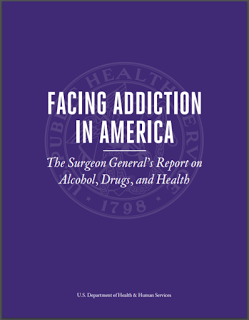Surgeon general’s addiction report, requested by McConnell and Democratic senator, calls for a new approach

Only 10 percent of Americans who abuse painkillers get treatment, so the nation needs to take a different approach to the growing problem of addiction, Surgeon General Vivek Murthy said Thursday in the first report on drugs and alcohol from a surgeon general.
“We have to recognize it isn’t evidence of a character flaw or a moral failing,” Murthy told Josh Hafner of USA Today. “It’s a chronic disease of the brain that deserves the same compassion that any other chronic illness does, like diabetes or heart disease.”
Murthy’s report says 78 people a day die from misusing opioids, one every 19 minutes. In Kentucky, overdoses claim about seven lives every two days.
Nationally, the spectrum from misuse to addiction affects affects 21 million people, and many as diabetes and half again as many as cancer. “We would never tolerate a situation where only one in 10 people with cancer or diabetes gets treatment, and yet we do that with substance-abuse disorders,” Murthy said.
The report estimated that alcohol addiction costs the nation $249 billion a year and drug addiction costs $193 billion, and that about one in seven Americans will have a problem with substance misuse at some time in their lives.
Murthy’s report “pulls together the latest information on the health impacts of drug and alcohol misuse, as well as on the issues surrounding treatment and prevention,” reports Lenny Bernstein of The Washington Post. “It offers reasons for optimism despite a still-increasing overdose epidemic that has killed more than 500,000 Americans since 2000, and it presents evidence that addiction is a treatable brain disease, with new therapies under development.”
The report has four appendices that offer a wide range of reference material for the public and journalists, including “Important Facts about Alcohol and Drugs,” “Evidence-Based Prevention Programs and Policies,” and a resource guide.
Political background
Murthy did the report at the request of Senate Majority Leader Mitch McConnell, R-Ky., and Sen. Edward Markey, D-Mass., who represent two of the states with the worst opioid-addiction problems. McConnell said he was “pleased to see this report highlight community-based prevention programs as being highly effective,” but Markey called it “a missed opportunity.”
“This report fails to provide any detailed road map for how best to curb opioid addiction,” Markey, said in a statement, adding that the scope of the opioid epidemic, “demanded a far more detailed discussion.”
President Obama “pleaded unsuccessfully with Congress this year for $1 billion to fight the opioid epidemic,” Katharine Q. Seelye writes for The New York Times. “Congress instead set aside $181 million.”
The report “comes as the incoming president, Donald J. Trump, prepares to appoint his own surgeon general and has his own ideas about how to combat the epidemic,” Seelye notes. “Trump has said that he will ‘try everything we can’ to get Americans ‘unaddicted’ to drugs, but his chief proposal is to build a wall on the border with Mexico. . . . Even if a wall kept some heroin out of the United States, it would not necessarily solve the problem. While many Americans are dying of overdoses of heroin, many more are dying from opioid painkillers legally prescribed within the United States. And in some states, deaths from synthetic opioids like fentanyl, which are coming from China, are overtaking deaths from heroin.”
Family ties
Family history plays a major role in substance abuse. “From 40 percent to 70 percent of a person’s risk for developing a substance use disorder is genetic, the report said, but many environmental factors — like how old he or she is when first drinking or trying drugs — can influence the risk,” Seeyle reports.
